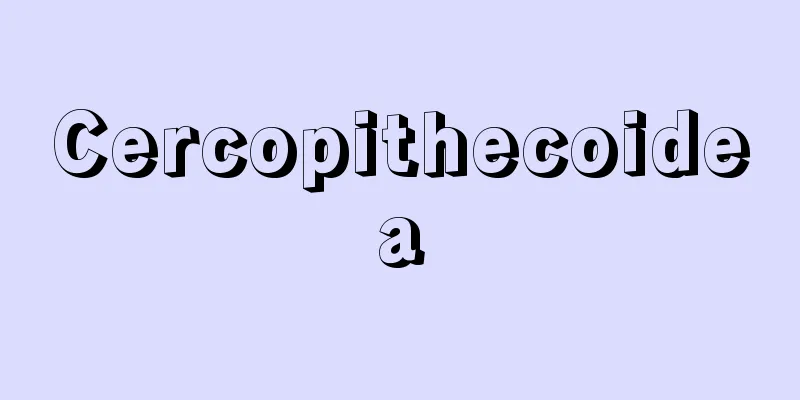Dehydration

|
A state in which there is a lack of water (body fluids). Body fluids contain electrolytes such as sodium ions, and electrolyte deficiency occurs at the same time as water deficiency. Dehydration is classified into three types: hypotonic, hypertonic, and isotonic. When body fluids are lost, if more electrolytes are lost than water, it becomes hypotonic (sodium deficiency) dehydration. Conversely, if more water is lost than electrolytes, it becomes hypertonic (water deficiency) dehydration, and if water and electrolytes are lost in equal proportions, it becomes isotonic (mixed) dehydration. Living organisms are constantly losing water through insensible transpira-tion, and in conditions where oral intake of water is insufficient due to vomiting, diarrhea, or impaired consciousness, they are prone to hypertonic dehydration, and when electrolytes are chronically lost through urine, such as in diabetes or adrenal insufficiency, they are prone to hypotonic dehydration. In addition, in conditions where a large amount of body fluid is lost suddenly, such as shock, trauma, or burns, which are the most common, it becomes isotonic dehydration. Differential diagnosis of these conditions is made by measuring plasma sodium levels and osmolality. If the measured values are high, it is hypertonic dehydration, and if they are low, it is hypotonic dehydration. If measurements cannot be made, they are estimated from clinical symptoms. Hypertonicity is characterized by severe dry mouth and decreased urinary output, while hypotonicity is characterized by severe drop in blood pressure, tachycardia, and neurological symptoms. Treatment for both conditions involves replenishing the deficit in water and electrolytes through intravenous fluids. In pediatrics, not only fluid deficiency but also fluid abnormalities such as electrolyte imbalance and acid-base imbalance are considered to be warning signs of pediatric illness, and intravenous fluid therapy is routinely performed. The amount of fluid deficiency in children is also determined based on their weight. A short-term loss of around 3% of a child's healthy weight is considered mild, around 7% moderate, around 10% severe dehydration, and 15% or more means death is imminent. [Yamaguchi Noriko] Source: Shogakukan Encyclopedia Nipponica About Encyclopedia Nipponica Information | Legend |
|
体内の水分(体液)が不足した状態をいう。体液にはナトリウムイオンなどの電解質が含まれており、水欠乏と同時に電解質の不足も生ずる。脱水症は低張性、高張性、等張性の三つに分類される。体液が喪失するとき、水分よりも電解質のほうが多く失われると低張性(ナトリウム欠乏性)脱水症となる。逆に水分の喪失のほうが電解質よりも多ければ高張性(水欠乏性)脱水症、水分と電解質が同じ割合に失われると等張性(混合性)脱水症となる。生体はつねに不感蒸散によって水分が失われており、嘔吐(おうと)や下痢、意識障害などで水分の経口摂取が不十分な状態では高張性脱水症になりやすく、糖尿病や副腎(ふくじん)不全のように尿から慢性的に電解質が失われると低張性脱水症に陥りやすい。また、もっともしばしばみられるショック、外傷、熱傷などで体液が大量かつ急激に失われる状態では等張性脱水症となる。これらの鑑別診断は血漿(けっしょう)ナトリウム値や浸透圧の測定により行われる。測定値が高ければ高張性脱水症であり、低ければ低張性脱水症である。測定ができない場合は臨床症状などから推定する。高張性では口渇感や尿量減少などが著しく、低張性では血圧低下、頻脈、神経症状などが著しい。治療はいずれも、水分と電解質の不足量を輸液によって補給する。 なお、小児科ではとくに水分の欠乏のみでなく、電解質のバランス失調や酸塩基平衡の失調などの体液異常も、小児疾患の危険信号として重視されており、日常的に輸液が行われている。また、小児の水分欠乏量は体重から判定されている。短期間に健康時の体重の3%前後の減少があれば軽度、7%前後では中等度、10%前後では高度の脱水症とみられ、15%以上では死の近いことを意味する。 [山口規容子] 出典 小学館 日本大百科全書(ニッポニカ)日本大百科全書(ニッポニカ)について 情報 | 凡例 |
<<: Dehydrogenase - Dassuisokoso
Recommend
New Testament - Novum Testamentum
For Christians, the second part of the Bible is a ...
Hiromine Shrine
Located in Himeji City, Hyogo Prefecture. Former p...
Wagner, P. (English spelling) WagnerP
…An experimental flowerpot invented by the German...
Zäsy, U. (English spelling) ZasyU
…German jurist. His German name was Ulrich Zäsy. ...
《The Origin of the Family, Private Property, and the State》 - The Origin of the Family, Private Property, and the State
… His theoretical activities were wide-ranging, b...
Museum of Fine Arts, Boston
Boston is one of the largest art museums in the U...
Gentensho
A legal code from the Yuan Dynasty in China. Its ...
Hendrick Goltzius
1558‐1618 Dutch printmaker, draughtsman and painte...
Amagasaki [city] - Amagasaki
The city is located in the southeastern corner of ...
Hitoyoshi Domain
This domain owned one district in Kuma County, Hi...
Ukin rubbing - Ukin rubbing
…Many of them add a publishing note at the end of...
Cornstarch - corn starch
Starch extracted from corn kernels. Corn is soake...
Ikeshima
An island in the Sumo Nada Sea in the southern pa...
Ceratocystis ips (English name) Ceratocystisips
…[Tsubaki Keisuke]. . . *Some of the terminology ...
Umru' al-Qays (English spelling)
...From about the 8th century, the ancient poetry...









